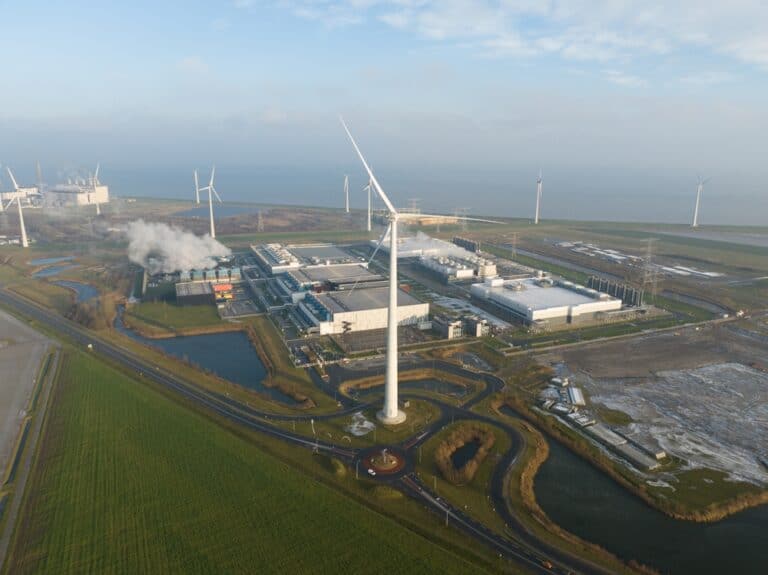AWS says it already runs entirely on renewable energy sources, thus achieving its sustainability ambitions seven years before the deadline. The report raises questions about Google Cloud’s sharply increased CO2 emissions, which it sees as necessary to meet rising demand for AI.
The cloud service’s parent company, Amazon, has also already covered 100 percent of electricity consumed by renewable energy sources. This is according to figures from the Sustainability Report, which shows the results of Amazon’s consumption. The company has been committed to a sustainable operating scheme for five years, starting with the signing of The Climate Pledge in 2019.
Efficient AWS infrastructure
Data centers usually throw a spanner in the works for energy consumption. At Amazon, however, AWS also appears to be meeting sustainability goals well. According to an Accenture study, the cloud player can achieve this by having an infrastructure that is 4.1 times more efficient than local infrastructure.
Furthermore, the cloud provider says it does not foresee any problems due to the rise of generative AI, which generally makes data center energy consumption sky-high. “We continue to invest emphatically in the development of AI solutions while at the same time doing everything we can to make our data centers – including servers and hardware – and the way we power AI applications and models more efficient and reduce the carbon footprint: from the infrastructure that powers the servers to data center cooling technology,” Danielle Gorlick, AWS General Manager Benelux, told Accenture.
For GPU workloads, such as machine learning, AWS has the Inferentia2 chip, for example. Inferentia can deliver 50 percent more performance per watt for machine learning, at up to 40 percent lower cost compared to a normal GPU, according to AWS.
A second factor contributing to the result is Amazon’s investments in carbon-free resources over the past four years. In recent years, the focus has been on solar and wind power projects, but AWS plans to broaden its scope in the coming years. Other CO2-free energy sources attracting interest are nuclear power and battery storage.
Is investing in nuclear power a viable alternative? We looked at that in this blog: AWS buys data center running on nuclear power: smart sustainability?
Running AI workloads without a high carbon footprint
Amazon’s investments are clearly not wasted if we look at the 2023 report. This makes the cloud player an interesting option for companies that value sustainability. “That also means that customers can significantly reduce the carbon footprint of their AI and machine learning workloads by moving from on-premises to AWS,” Gorlick said.
A platform like Google Cloud is currently less interesting in that regard. It is putting a lot of resources into becoming climate-neutral and water-neutral by 2030, but consumption in 2023 is still far from these goals. The rise of GenAI makes the goals even more challenging for Google Cloud, as the cloud provider attributes the doubling of emissions over the past five years entirely to the increased demand for AI. According to Google Cloud, that demand could only be met by falling back on fossil fuels. In contrast, the same technology appears to be no problem at AWS, making Google Cloud’s explanation less legitimate. The same Accenture study found that running AI workloads on AWS infrastructure reduces CO2 emissions by 99 percent in comparison with running it on local infrastructure.
Water consumption needs improvement
Finally, work does lie ahead on the goal of being water-positive by 2023 for data center operations. At that point, AWS would return more water than it uses in the countries where the cloud player operates. By 2023, 41 percent of this goal had been achieved. In this goal, AWS dares to oblige itself a little more than Google Cloud. The competitor claims to be water-neutral first by 2030. “Over time,” it wants to operate water positively and concretely return 120 percent of its total water consumption.
AWS’ sustainability report shows that not every cloud vendor is floundering with energy and water consumption. With the right hardware, servers and investments, even the rise of energy-hungry AI is no challenge for carbon emissions. The report stands in sharp contrast to the results recently presented by Google Cloud. This cloud platform will need an urgent look at the roadmap it is going through to bring down energy emissions now that they have skyrocketed in the last five years. AWS shows that it can run 100 percent on renewable energy sources in the same time period.
Read more: Google’s CO2 emissions double: AI demands high environmental price
